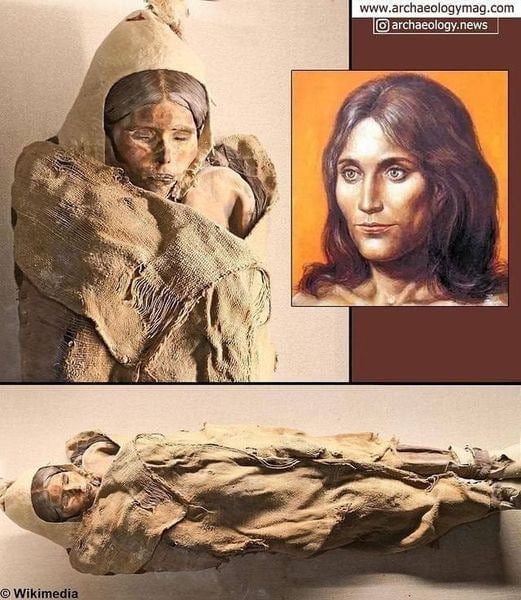“The Loulan Beauty” is one of the most well-known Tarim mummies. Over 200 mummified bodies from the Bronze Age have been preserved in the arid conditions of the Tarim Basin in northwest China. The oldest mummies are over 4,000 years old, and they include representatives of both European and Mongoloid types.
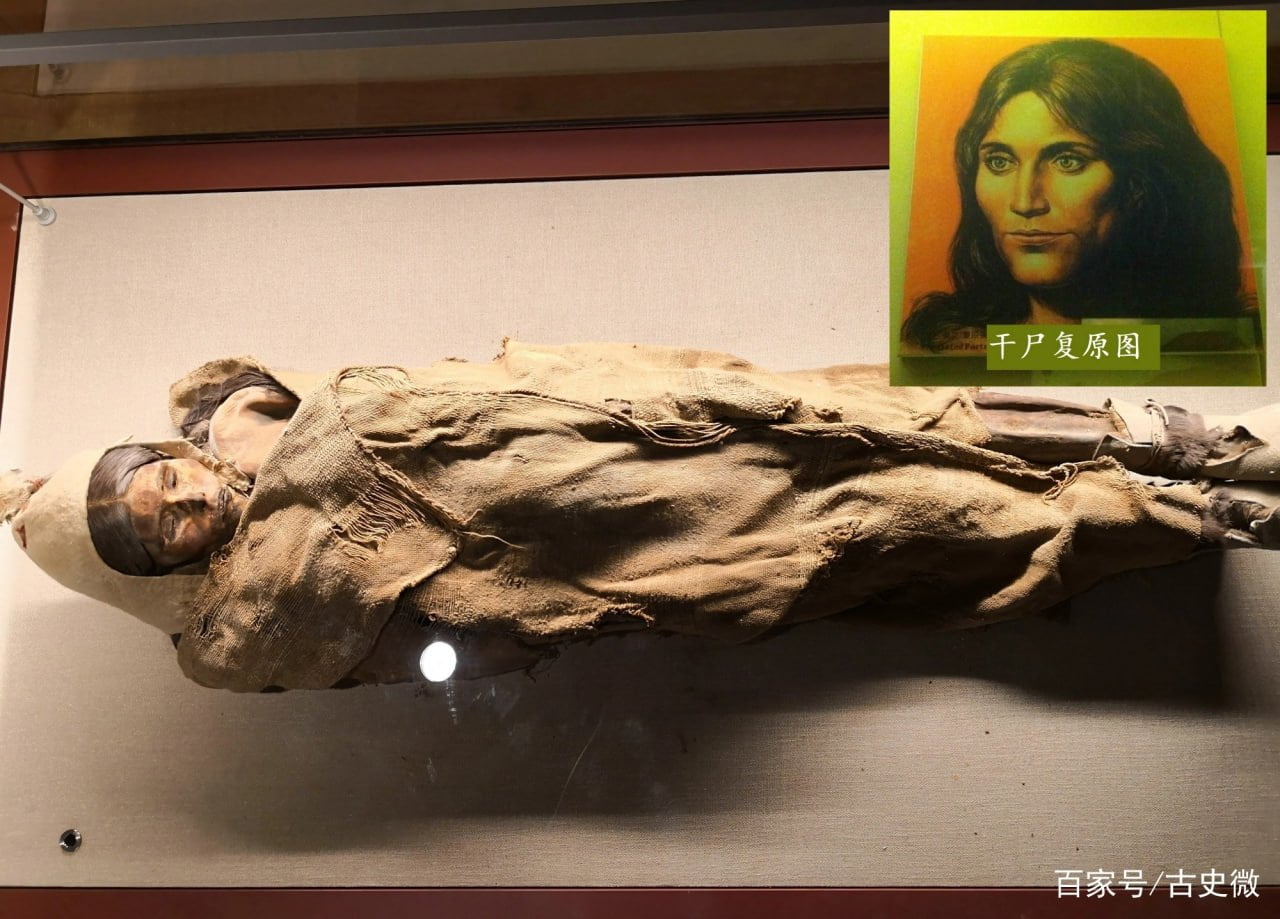
The mummy was discovered on April 1, 1980, by Chinese archaeologists working on a film about the Silk Road near Lop Nur, a dried-up salt lake that the Chinese used for nuclear testing.
Unlike Egyptian mummies, Tarim mummies were preserved due to natural causes — extremely dry conditions and salty soil. Even the Loulan Beauty’s eyelashes have been preserved.
The woman had a European appearance with high cheekbones, a high nose bridge, and reddish-blond hair — although it’s possible that her hair was darker in life. Over time, mummies’ hair often lightens.
The woman was buried at a depth of 1 meter, wrapped in a woolen cloak. She had a goat skin, a felt hat, and leather shoes. Additionally, the grave contained a wooden comb, basket, and tray for winnowing grain, as well as ceramic objects. The woman’s clothes and shoes had been repaired multiple times. Her hair was infested with lice.
According to radiocarbon dating, the “Loulan Beauty” died around 1800 BC.
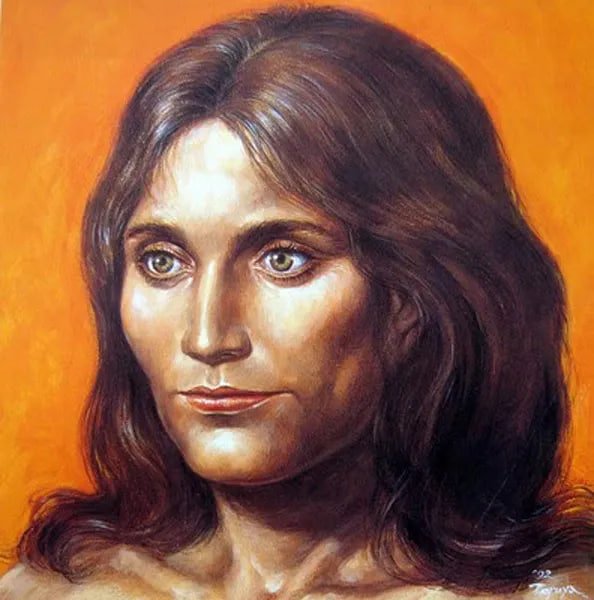
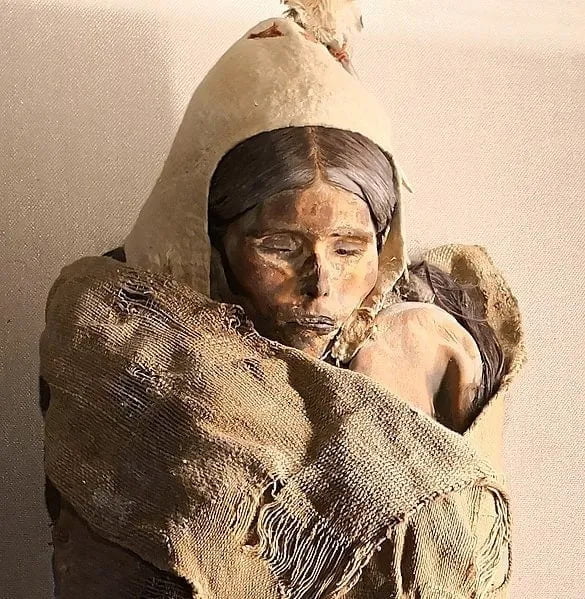
The woman was 152–155 cm tall. Her internal organs were well-preserved. Her lungs contained a lot of dust, sand, and soot, possibly contributing to her death at the age of 40.
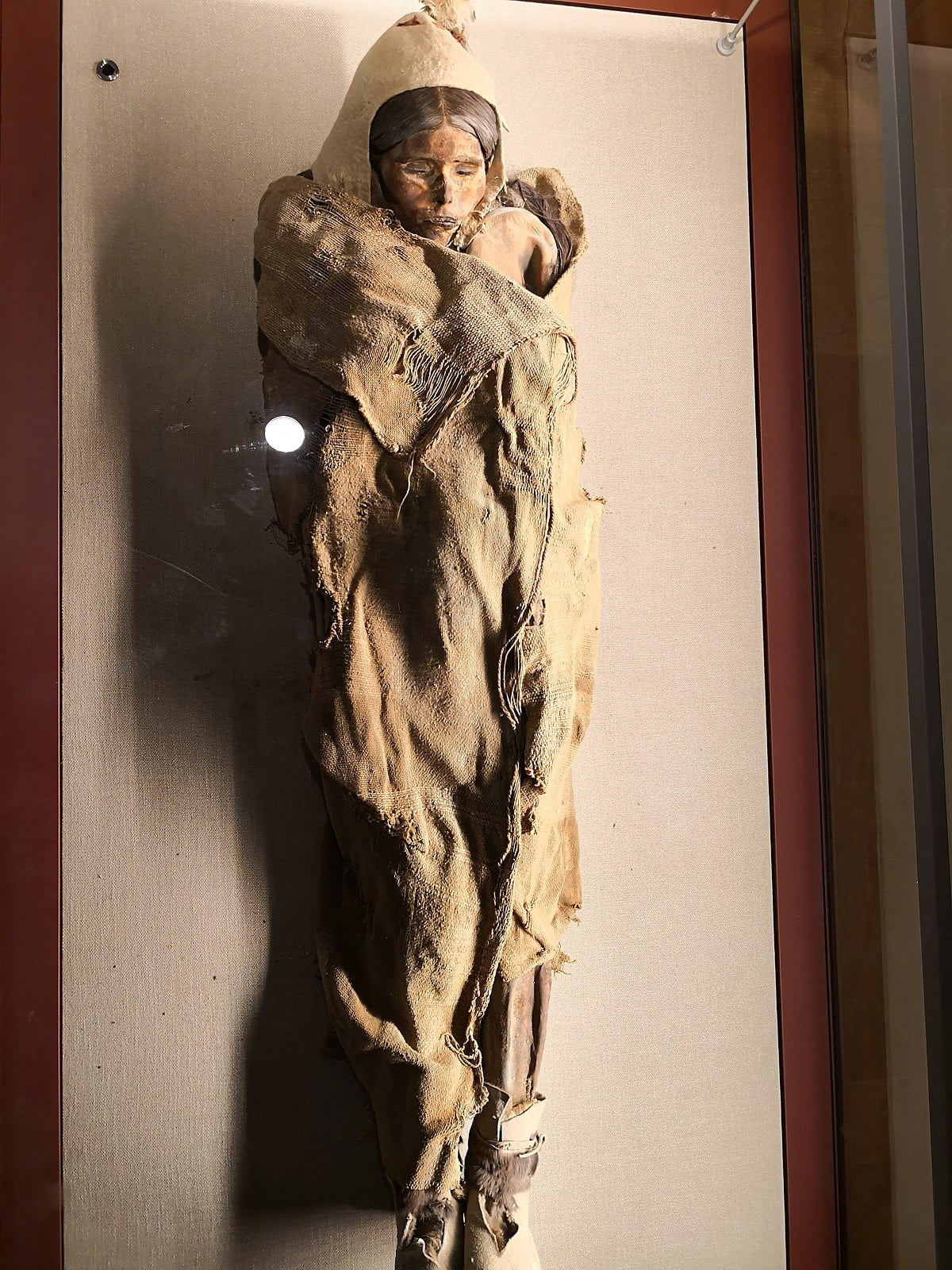
Genetic analysis has shown that the ancestors of the population to which the “Loulan Beauty” belonged arrived in China from west Eurasia, possibly through Siberia.
The portrait of the woman was created by Japanese artist Yamaguchi Terunari. The mummy is currently exhibited on the second floor of the Xinjiang Museum in the “Mummy Hall.”
